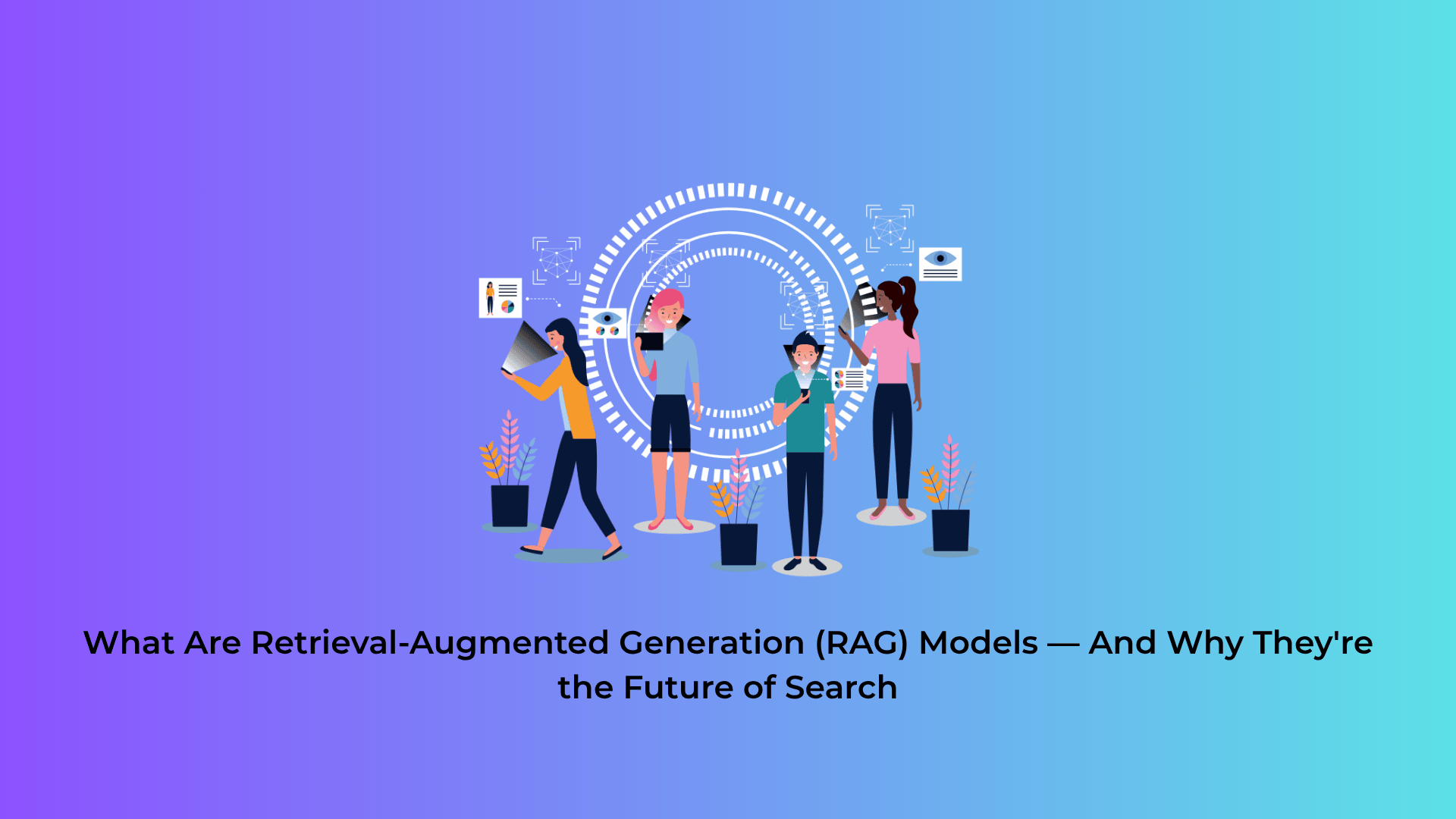In 2025, one of the most critical shifts in AI and search technology is happening quietly behind the scenes — and it’s called Retrieval-Augmented Generation (RAG). This technique rapidly reshapes how large language models (LLMs) interact with information, making responses more intelligent, factual, and up-to-date.
While traditional LLMs rely entirely on the data they were trained on, RAG models combine Generation with real-time retrieval, bringing the best of both worlds: language fluency and factual accuracy. And soon, they might replace traditional web search engines altogether.
🔍 What Is Retrieval-Augmented Generation (RAG)?
RAG is an architecture that merges two significant components:
- Retriever: A system (often a vector database or dense retriever) that finds the most relevant documents, passages, or data snippets from an external knowledge source, like your database, the web, or internal docs.
- Generator: A large language model (like GPT or LLaMA) that uses those retrieved results as context to generate a more accurate and grounded answer.
Example:
You ask for a RAG system:
“What are the latest updates on EU AI regulation?”
It retrieves documents from the web or legal databases in real-time, and then uses those facts to generate a summarized, accurate answer.
🧠 Why RAG Is So Important in 2025
1. Solves Hallucination Problems
One of the biggest criticisms of LLMs is “hallucination” — confidently generating false or outdated information. RAG reduces this by grounding outputs in retrieved, verifiable data.
2. Makes AI Dynamic
Unlike static, pre-trained LLMs, RAG models can pull in fresh content. That means they’re not stuck with 2023 or 2024 data — they can answer with the latest information.
3. Customizable for Any Domain
Businesses can feed RAG systems their documentation, internal knowledge bases, or industry data, creating a domain-specific expert without retraining the LLM.
4. The Foundation of AI-Powered Search
Tools like Perplexity.ai, You.com, Komo AI, and even ChatGPT with web browsing use RAG-style architectures to deliver conversational answers with sources. This is the future of search:
It’s a dialogue, not a list of links.
🧰 How RAG Works (Simplified Workflow)
- User Query →
- Retriever fetches top-N relevant documents (e.g., using vector similarity) →
- Documents are fed as context into the LLM →
- LLM generates a response grounded in the retrieved content
This enables traceable, explainable AI output where sources can be cited and validated.
🔄 RAG vs Traditional Web Search
| Feature | Web Search (e.g., Google) | RAG Model |
|---|---|---|
| Output | List of links | Direct answer with sources |
| Freshness | Relies on indexing | Retrieves live or indexed docs |
| User Experience | Multiple clicks, ads | Single-step conversation |
| Personalization | Cookie-based | Can be context-aware, personalized |
| Transparency | Limited | Shows sources in output |
🛠️ Real-World Use Cases of RAG in 2025
- Customer Support: AI bots that can answer with up-to-date product knowledge
- Internal Knowledge Tools: Employees using RAG-based assistants to search company docs
- Legal & Compliance: Pulling and summarizing real-time regulations
- Healthcare: Providing AI-driven diagnoses based on the latest clinical guidelines
- AI-Powered Research Assistants: Summarizing dozens of sources with references
🔮 Is RAG the End of Google-Style Search?
Not instantly, but the RAG-based model is rapidly growing. Companies are realizing that users prefer direct, grounded, conversational responses over a clutter of links and ads.
And as tools like ChatGPT, Claude, and Perplexity integrate deeper retrieval capabilities with highly fluent LLMs, we’re likely moving toward a searchless internet, where you ask, and your assistant gets it done.
✅ Final Thoughts
Retrieval-augmented Generation is not just a technical breakthrough — it’s a shift in how humans access information. Whether you’re building an enterprise AI assistant or using the next-gen version of your favorite chatbot, RAG makes your AI more innovative, accurate, and valuable.
The next time you get a perfectly sourced, up-to-date answer from an AI? You’ll know RAG was working behind the scenes.

